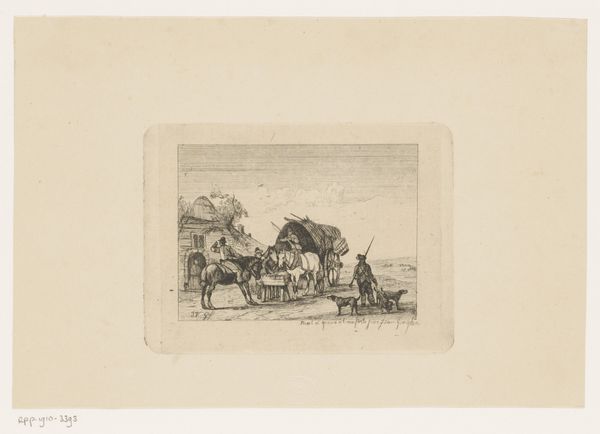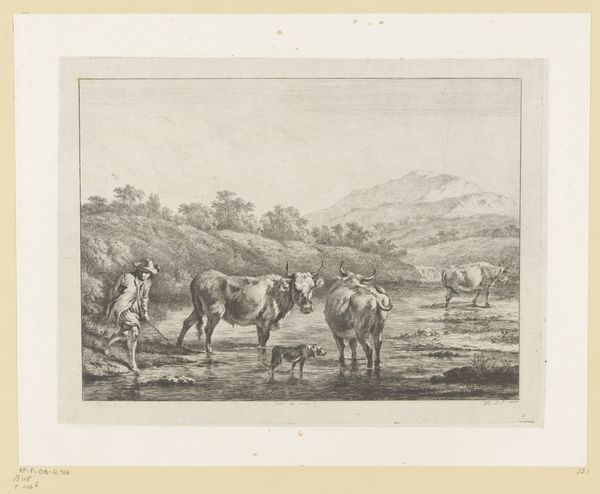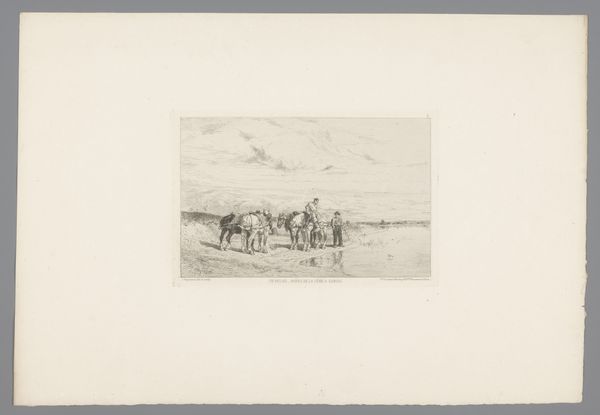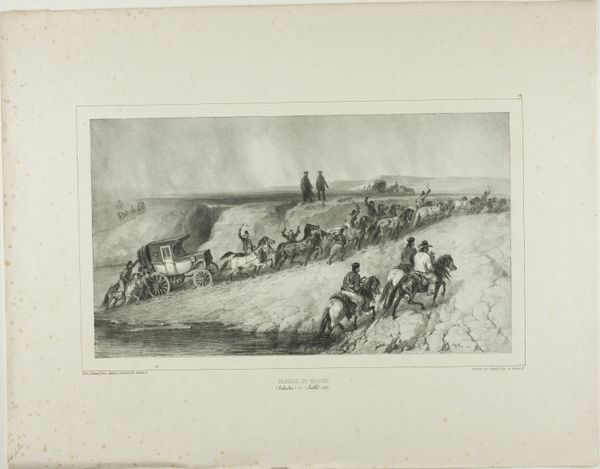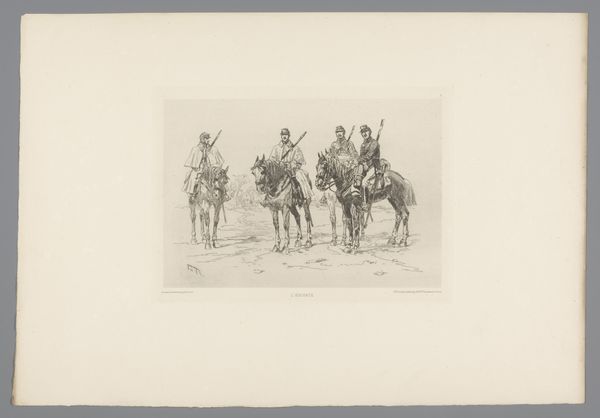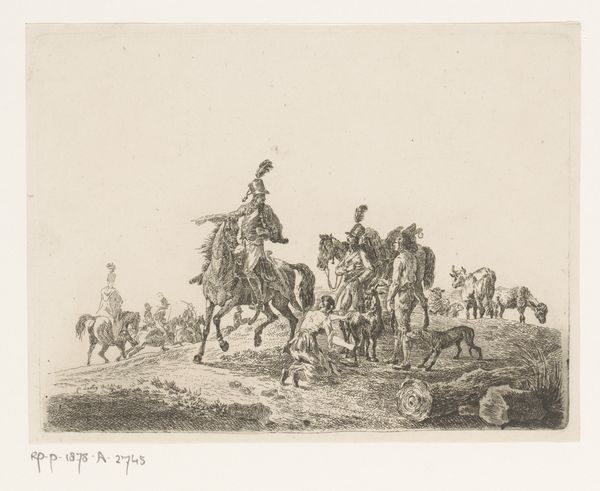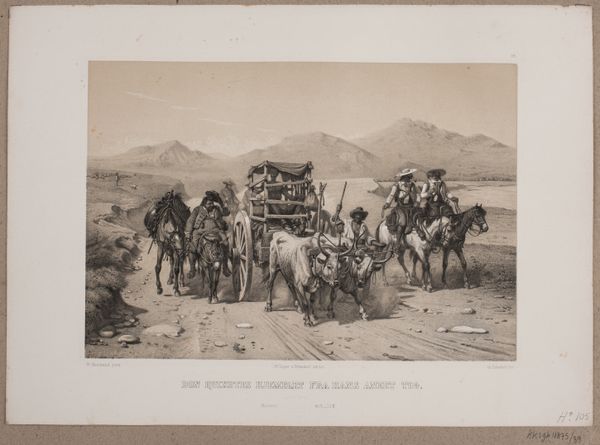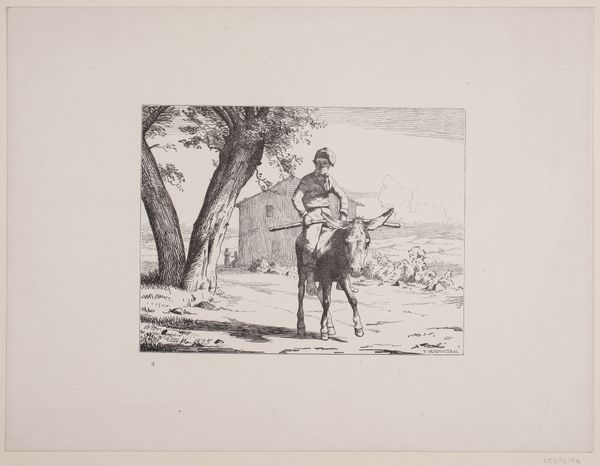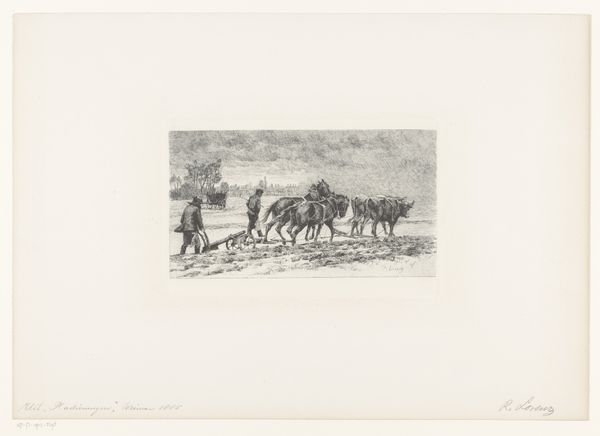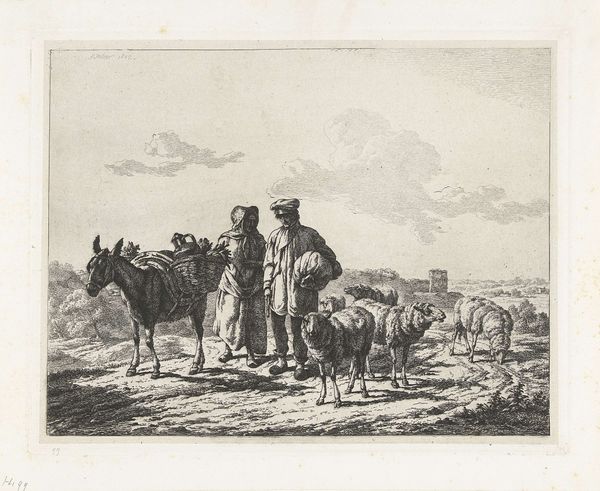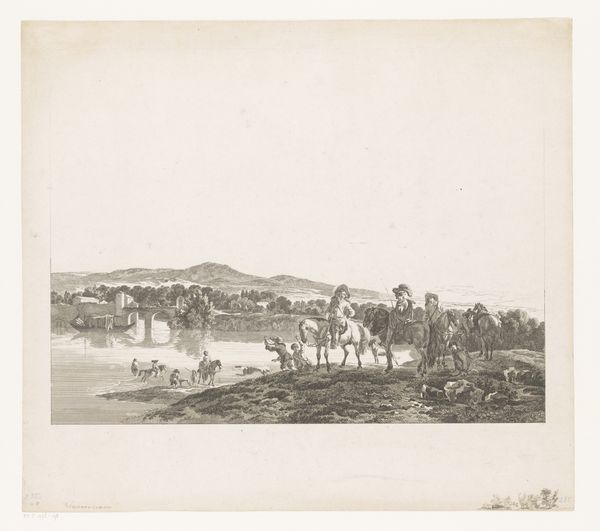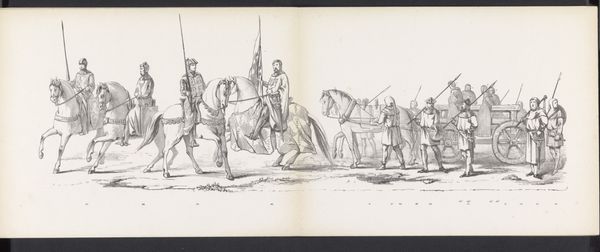
Family of Traveling Hungarian Gypsies, Moldavia, July 19, 1837 1839
0:00
0:00
drawing, lithograph, print, paper
#
portrait
#
drawing
#
narrative-art
#
lithograph
# print
#
landscape
#
paper
#
romanticism
#
genre-painting
Dimensions: 197 × 283 mm (image); 197 × 283 mm (primary support); 349 × 456 mm (secondary support)
Copyright: Public Domain
Curator: This lithograph by Auguste Raffet, created in 1839, offers us a glimpse into the lives of a Romani family in 19th-century Moldavia. It's titled "Family of Traveling Hungarian Gypsies, Moldavia, July 19, 1837" and it is now part of the collection at The Art Institute of Chicago. Editor: There's something incredibly stark about this image. The sheer flatness of the landscape really emphasizes the group's vulnerability as they move across it. The lithographic rendering gives it an interesting immediacy, almost like a news photograph. Curator: Raffet was quite interested in portraying military and social themes with a high degree of realism, a defining attribute of Romanticism at the time. The depiction of Roma people became more commonplace in the Romantic era, and was often filtered through exoticising lenses. This print provides insight into those common visual narratives. Editor: Absolutely. Looking at the way the carts are loaded—clearly possessions accumulated over a long journey—you have to think about the labor involved. The artist pays particular attention to the animals doing the hauling, these bulls and horses rendered in exacting detail, tools of both production and survival. Curator: What I find compelling is how Raffet positions the figures within a larger European narrative about marginalization. These representations often helped shape public perception and policy regarding the Roma at the time. It's a document not just of a family's journey, but of the attitudes and assumptions of the society observing them. Editor: It certainly speaks volumes about the power dynamics at play. The landscape feels almost secondary; the emphasis remains on the figures, and how they occupy this difficult space, seemingly both subjects of the landscape and alienated from it by necessity of labor. The materials used—lithographic stone, paper, ink—become tools for documentation. Curator: Indeed, and by bringing pieces such as these into museum collections, we have an opportunity to question and reinterpret these stories for a contemporary audience. How have representations of itinerant communities changed, and what continuities do we see in their cultural depictions? Editor: Precisely, and engaging with the art itself invites a more active form of analysis. How does the use of lithography – a method involving collaboration of artist and printer – reinforce ideas of the reproduction of labor that characterized Romani traveling lifestyles? Questions well worth exploring.
Comments
No comments
Be the first to comment and join the conversation on the ultimate creative platform.

